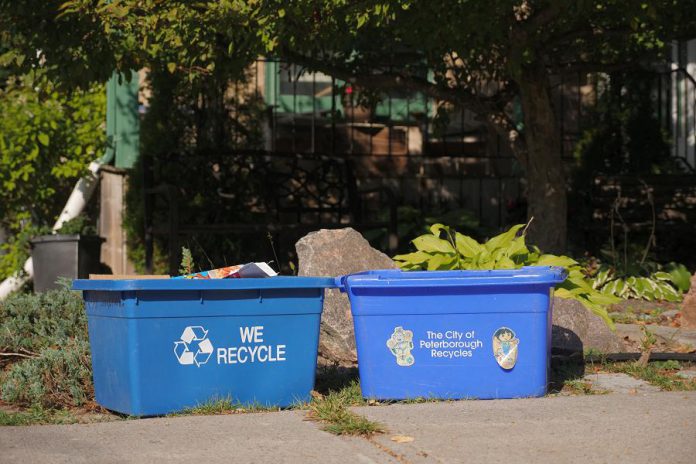
“That’s not recyclable, you know.”
Is there someone you know who’s particularly keen when it comes to recycling? Who’s scolded you as you’ve tossed a perfectly recyclable pop bottle, peanut butter jar, or pizza box into the blue bin? You’ve been recycling since you were a child. You’re sure you know what to do and where things go. But do you?
If that pop bottle is partially full, if that peanut butter jar is goopy, or if that pizza box is slathered in grease and cheese bits from your meal the night before — they’re right to scold you.
It’s called “contamination” and it’s harming our recycling system.
Ontario’s blue box program is more than 35 years old. In fact, our province founded the blue box program that has since been replicated around the world. Starting in the Toronto neighbourhood of The Beaches, it was the grit and vision of a man named Jack McGinnis that launched the first-ever curbside recycling pickup program. What was once a very strange idea is now a reflex in many households across Ontario.
But our blue box program — our provincial pride, our household habit — is struggling. Contamination is making it very expensive to operate, decreasing the value of our efforts and soiling opportunities.
When we put materials into our blue box that shouldn’t be there, they obviously have to be removed — which is costly and not always a simple process — or they contaminate the sellable materials. This is a no-no.
Countries like China, that up to now have taken our recyclables to manufacture into something new, have had enough. Our materials must now be much cleaner or they won’t take them. In other words, that goopy peanut butter jar is making a mess of our blue box program.
“Contamination takes on many forms,” says City of Peterborough waste diversion section manager Dave Douglas. “Besides dirty materials, there’s ‘wish-cycling.’ That’s the idea that if you put something into the blue box that shouldn’t be there — like stray bits of unnumbered plastic (look for that triangle recycling symbol on the bottom), light bulbs, wooden mandarin orange crates, or old electronics — our staff will be able to find a home for it.”
“It just doesn’t work that way. Instead, it costs taxpayers money for us to remove it and then cart it off for disposal. It would be much less costly if it wasn’t there in the first place.”

We know it’s critical to keep recyclables out of the landfill. But while we’ve been under the impression that the blue box program works, it’s merely limping along and running into problems. Across the province, recycling rates haven’t changed much in 15 years. Currently, up to 30 per cent of what goes into the blue box has to be hauled off to a landfill because of contamination.
Last Thursday (August 15), the provincial government announced it was ready to take the blue box program to the next level. After more than three decades of municipally run blue box programs, the province is on the cusp of handing the management of them over to the original manufacturers and sellers of the products and packaging.
It’s a progressive move toward what’s called a “circular economy,” which is a concept in which there is no waste. Rather, the things we need are made from the materials we are finished with. If producers manage their waste, they can drive this concept forward. It’s a lofty but necessary goal.
To you and me, there won’t be a noticeable difference. It will still look like our curbside recycling program. However, it’s likely the new managers won’t want to pay for our mess — so an uncontaminated blue box will be critical to a successful recycling future.
Thirty-five years ago, Ontario was the first in the world to develop the blue box program. Ontario residents now need to reinvigorate their interest. While the government is committed to ensuring our recycling program is maintained and even expanded, it’s time for each of us to recommit to recycling.
If we all make sure the materials we put into the blue box are clean and uncontaminated, and provide input during the provincial consultation process that’s expected to begin in the fall, we can ensure a smooth transition to a new, innovative, and more robust program — putting us back on the map as world leaders in recycling.
To be a part of the solution and ensure you are the recycling expert in your household, revisit the recycling pages on the City of Peterborough website or the County of Peterborough website regularly. Review them for new or removed recyclable materials, and only place items that are clean and recyclable into the blue box.


























